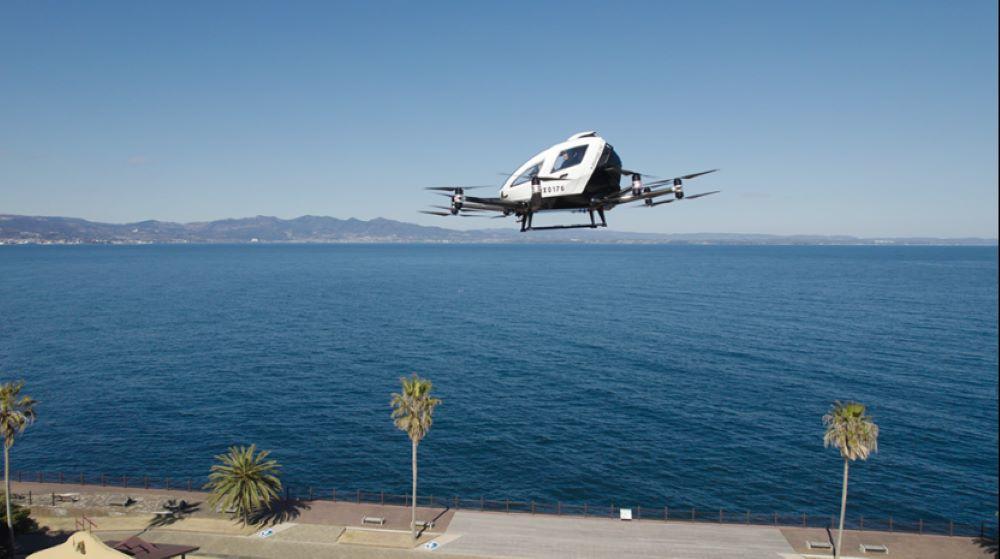
The fully autonomous EH216-S is designed to carry two passengers on trips up to 35 km (22 mi.).
EHang is laying the groundwork for the imminent commercial launch of its EH216-S unmanned multicopter, after it became the first company in the world to receive a type certificate (TC) for an electric vertical-takeoff-and-landing (eVTOL) vehicle in October.
Since obtaining its TC, EHang has seen a “significant increase in business collaborations and product purchase demand from customers around the globe, especially from China,” according to remarks from CEO Huazhi Hu on the Chinese startup’s latest earnings call.
EHang is currently in the process of finalizing its production certificate, according to Hu, marking another key milestone that will allow it to mass-produce aircraft. The company can still produce smaller batches of aircraft in the meantime without that certificate, but it has to verify the airworthiness of each individual aircraft, a time-consuming process.
The initial batch of EH216-S aircraft produced according to the TC are expected to roll off the production line at EHang’s Yunfu factory during the fourth quarter, according to Hu.
With a firm backlog of 450 units, EHang believes there is strong and growing demand for its EH-216, particularly among domestic operators that have already ordered 245 units. These include orders for up to 100 aircraft from Boling–an operator in Shenzhen city where EHang plans to launch service in the Bao’an District–and a separate order for up to 100 units from the Hefei Municipal Government, which plans to launch service in Luogang Central Park in Hefei City.
EHang says that around 10% of its firm order backlog are for the logistics and firefighting variants of the EH-216. Those versions will require their own TCs, although the company says obtaining the certifications will be relatively easy compared to the task of certifying the initial passenger-carrying model.
EHang also has 210 firm orders from customers in nearby East Asian countries. While its sales prospects in other regions are less clear–the FAA and European Union Aviation Safety Agency (EASA) are unlikely to sign off on the autonomous aircraft–the company said it is working to validate its TC in other countries, naming the Brazilian Civil Aviation Authority as a foreign regulator with which it has opened a dialogue.
The performance of the EH216-S is limited, with a two-passenger capacity and range of 30 km (18 mi.), likely restricting its mission profile to niche aerial sightseeing and tourism services. However, the company has invested in a solid-state lithium metal battery startup called Inx, technology that Hu said could eventually be used to enhance the range of the EH-216.
While the company described initial use cases as “narrow,” Hu said he hopes to see commercial services eventually expand into a “broader range of urban and mobility applications, including airport shuttles and fully autonomous urban air taxis.”
EHang also reported that development of the lift-plus-cruise VT-30–designed to carry two passengers on trips up to 300 km–is ongoing, although proceeding at a “much slower” pace than the EH216-S. Mention of the larger VT-30 is notable because company executives had not discussed the aircraft on previous earnings calls, leading some observers to question whether the program was still alive.
The company’s Unmanned Aircraft Cloud System received approval from Chinese regulators to begin trial operations in August. Once authorized, that urban traffic management system will allow for the safe integration and management of clusters of multiple unmanned air vehicles, paving the way for large-scale operations of EHang’s multicopters.
EHang recorded an adjusted net loss in the third quarter (Q3) of RMB31.3 million (US$4.3 million), marking a 43% improvement year-on-year.
The company had RMB295.6 million ($40.5 million) in liquidity as of the end of Q3.
EHang was tied for second place in SMG Consulting’s latest edition of the AAM Reality Index with a score of 8/10.
